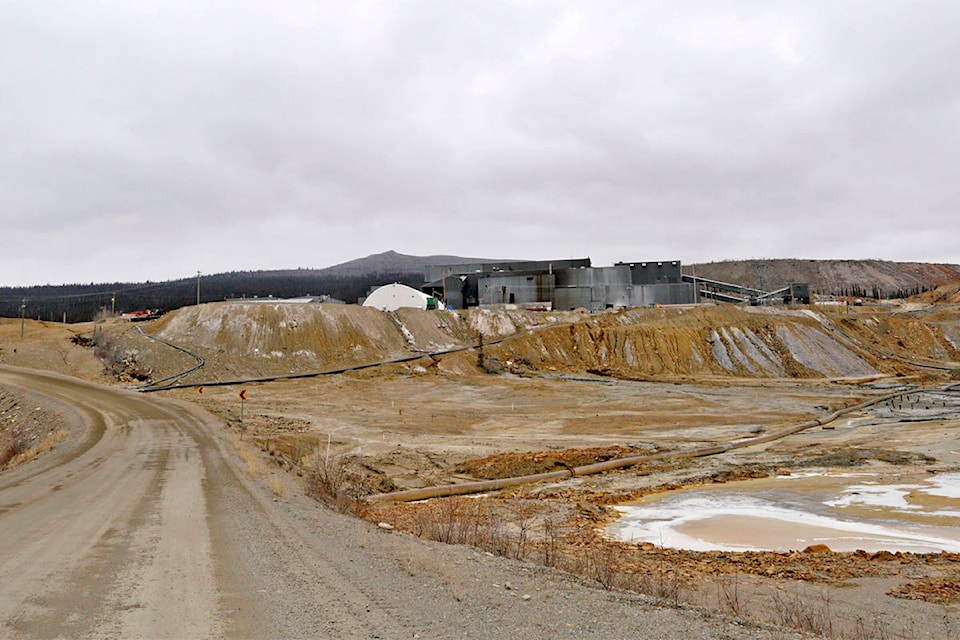The federal government announced $2.2 billion in funding over 15 years for reclamation work at five Yukon abandoned mine sites along with another three in the Northwest Territories.
The federal Northern Abandoned Mine Reclamation Program was announced by Crown-Indigenous Relations Minister Carolyn Bennett in Yellowknife on Aug. 19 as a long-term plan to clean up contaminated mine sites throughout the North.
The funding will become available in the 2020/2021 fiscal year and is expected to see the completion of reclamation work at all but one site — work at the Faro Mine is not expected to be finished by the end of the 15 year mark.
Other abandoned mine sites to receive funding on the Yukon side include the Clinton Creek mine, Ketza mine, Mount Nansen mine and United Keno Hill mines. Meanwhile, in the N.W.T. planning will be done for the Cantung mine, Giant mine, and on the Great Bear Lake Remediation Project.
All the mine sites are expected to, after the remediation work is done, require ongoing care and maintenance to ensure the clean up measures are working as planned.
Yukon Conservation Society mining analyst Lewis Rifkind says federal funding had been expected with reclamation planning efforts underway to some degree at the former mine sites.
“This isn’t a surprise,” he said.
The announcement, however, indicates the work is moving ahead on the clean up of the major abandoned mine sites and that is good news for the North.
“We’re glad things are proceeding,” he said.
The news release and backgrounder on the plans does not provide specific details on how much money will go to each mine site.
The largest project in the Yukon will be at the Faro mine, which Ottawa took over management of from the Yukon government in May 2018.
The mine was once the largest open-pit lead-zinc mine in the world. Abandoned in 1998, 70 million tonnes of tailings and 320 tonnes of waste rock were left.
The clean-up has previously been estimated to cost half a billion dollars in addition to $350 million that had already been spent on care and maintenance.
A backgrounder provided by the federal government states the proposal for the work has been submitted to the Yukon Environmental and Socio-economic Assessment Board, an important step that was “based on meaningful input from First Nations and other key stakeholders”.
Despite that, the documents are not yet available on YESAB’s online public registry.
“The major remediation phase will begin once the regulatory, environmental and socio-economic assessments are approved,” the backgrounder states. “Remediation of the Faro Mine is not expected to be fully completed before the end of the Northern Abandoned Mine Reclamation Program.”
It’s not clear what’s to come for the 25 square kilometre property after the funding ends. Federal communications staff did not respond to questions by deadline.
Meanwhile, plans for remediation at the other former mine sites are in various stages.
At the former asbestos mine site of Clinton Creek, northwest of Dawson, a conceptual remediation plan is expected in the Spring of 2020 with regulatory authorizations anticipated for 2025 with the actual remediation work beginning the following year and continuing for four years.
A remediation plan for the former gold and silver Ketza River Mine southeast of Ross River is anticipated to be finished in 2022 with a remediation schedule to follow from that.
With the former gold and silver Mount Nansen Mine in the process of being sold to the Mount Nansen Remediation Limited Partnership, it’s expected the company will get a water licence in 2022 and be responsible for care and maintenance and coming up with a remediation plan. The remediation work would then likely begin in 2023 and continue for two years.
Finally for the Yukon would be the former 50 silver producing mines that made up United Keno Hill Mines northeast of Mayo.
Alexco Resource Co. purchased the mines in 2006, providing ongoing care and maintenance since. With a reclamation plan drafted, it’s anticipated the regulatory authorizations needed will be in place in 2020 with the work to start in 2021, taking four years in total. As with other projects, long-term monitoring would follow.
Meanwhile, in the N.W.T. the Cantung Mine (which can only be accessed through the Yukon), is owned by the North American Tungsten Corporation which has been under creditor protection since 2015. North American Tungsten is responsible for care and maintenance of the mine and work is being done in conjunction with the federal government to look at closure options. With tungsten and copper reserves still in the ground, it is possible the federal government could find a new owner to resume mining before remediation work happens and the site is closed.
Regulatory and water licence approvals for the Giant Mine are anticipated for 2020 with work getting underway in 2021 and continuing for about 10 years.
And at Great Bear Lake, a remediation contract is anticipated to go to tender in 2021 and get underway the following year, taking approximately five years to complete.
“Indigenous and Northern communities must be able to meaningfully participate in and benefit from the Government of Canada’s investment in cleaning up northern contaminated site,” Bennett said. “The new Northern Abandoned Mine Reclamation Program demonstrates the Government of Canada’s commitment to engage with Indigenous and Northern communities and find approaches that benefit both the environment and the economy.”
Contact Stephanie Waddell at stephanie.waddell@yukon-news.com
